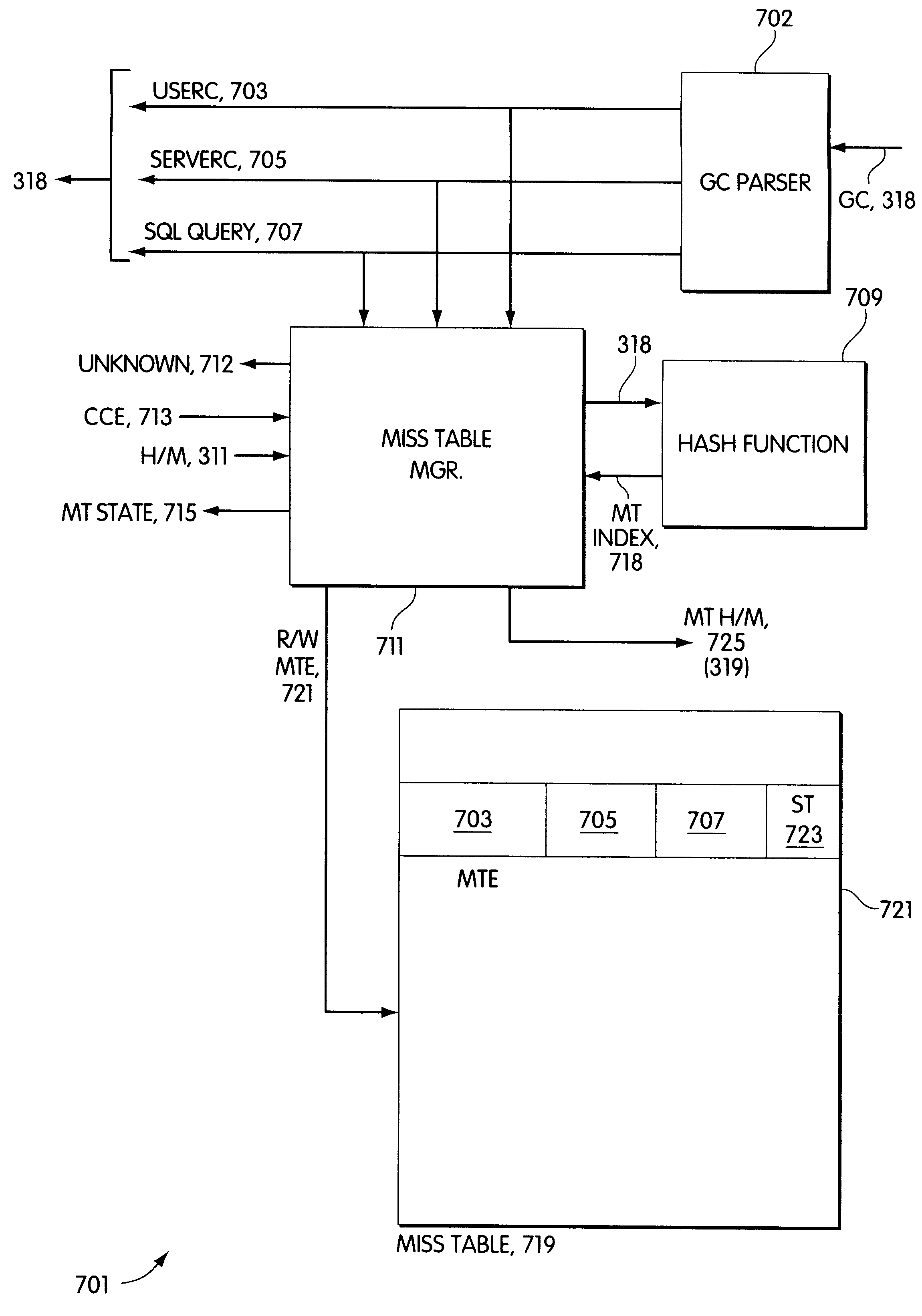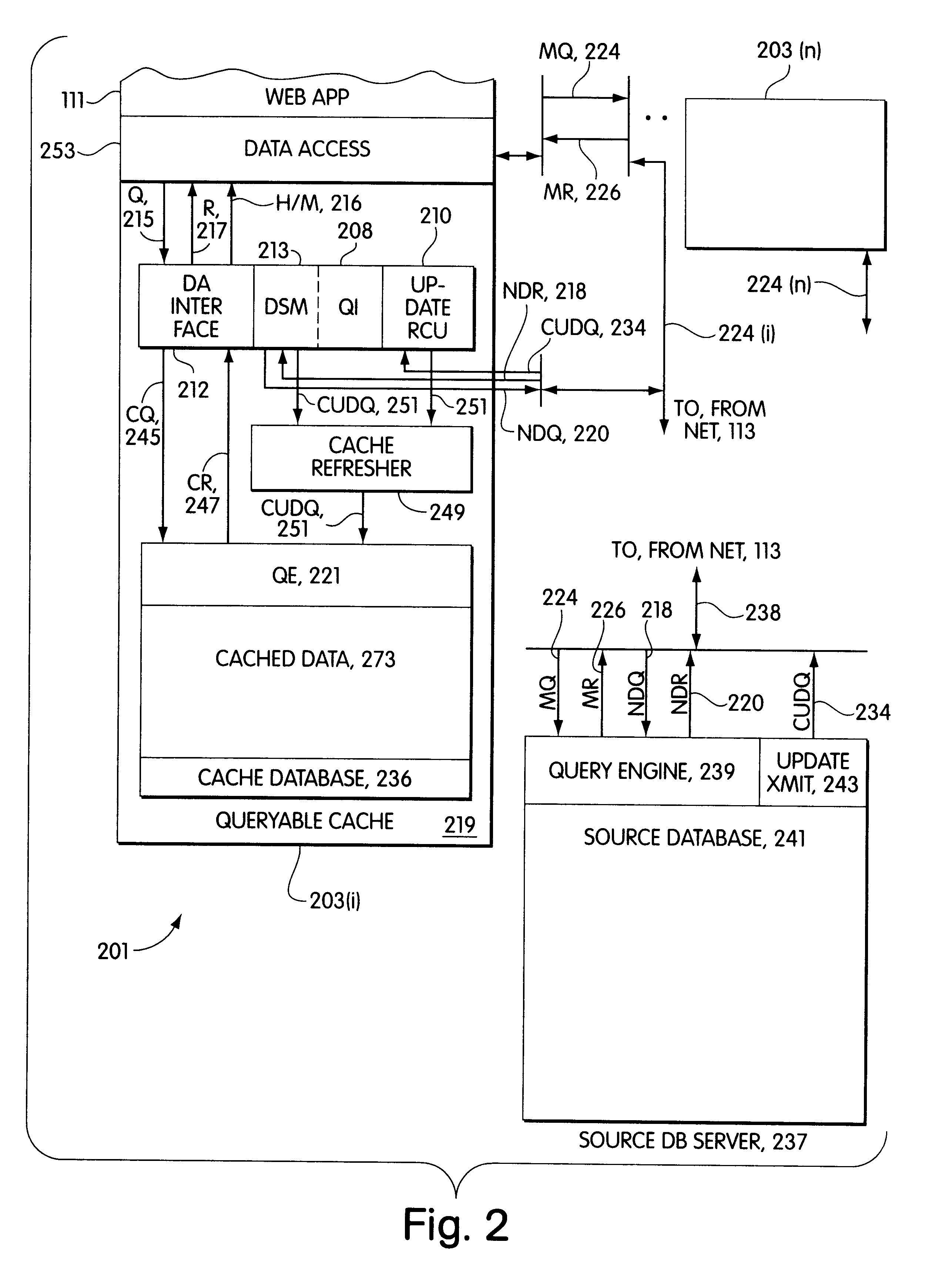Dynamic caches with miss tables
a dynamic cache and table technology, applied in the field of caches of data in networks, can solve the problems of huge new burdens on the services, difficult to learn and use access, and huge burdens on the data base server
- Summary
- Abstract
- Description
- Claims
- Application Information
AI Technical Summary
Problems solved by technology
Method used
Image
Examples
Embodiment Construction
of a Data Access Layer and a Queryable Cache FIGS. 3, 5, and 6
FIG. 3 shows a preferred embodiment 301 of data access 349 and queryable cache 302. Corresponding components of FIGS. 2 and 3 have the same names. Cache database 347 in embodiment 301 is an Oracle8 Server, which is described in detail in Leverenz, et al., Oracle8 Server Concepts, release 8.0, Oracle Corporation, Redwood City, Calif., 1998. In preferred embodiment 301, Web application 111 uses global data set identifiers in queries. The Web applications 111 in all of the servers 203 use the same set of global data set identifiers. A cache data base 347 in a given server 203 has its own set of local data set identifiers for the data sets cached in cache data base 347. In preferred embodiment 301, then, one may speak of global queries and query contexts that use global data set identifiers and local queries and query contexts that use local data set identifiers. In the preferred embodiment, query analyzer 313 uses cached dat...
PUM
 Login to View More
Login to View More Abstract
Description
Claims
Application Information
 Login to View More
Login to View More - R&D
- Intellectual Property
- Life Sciences
- Materials
- Tech Scout
- Unparalleled Data Quality
- Higher Quality Content
- 60% Fewer Hallucinations
Browse by: Latest US Patents, China's latest patents, Technical Efficacy Thesaurus, Application Domain, Technology Topic, Popular Technical Reports.
© 2025 PatSnap. All rights reserved.Legal|Privacy policy|Modern Slavery Act Transparency Statement|Sitemap|About US| Contact US: help@patsnap.com



